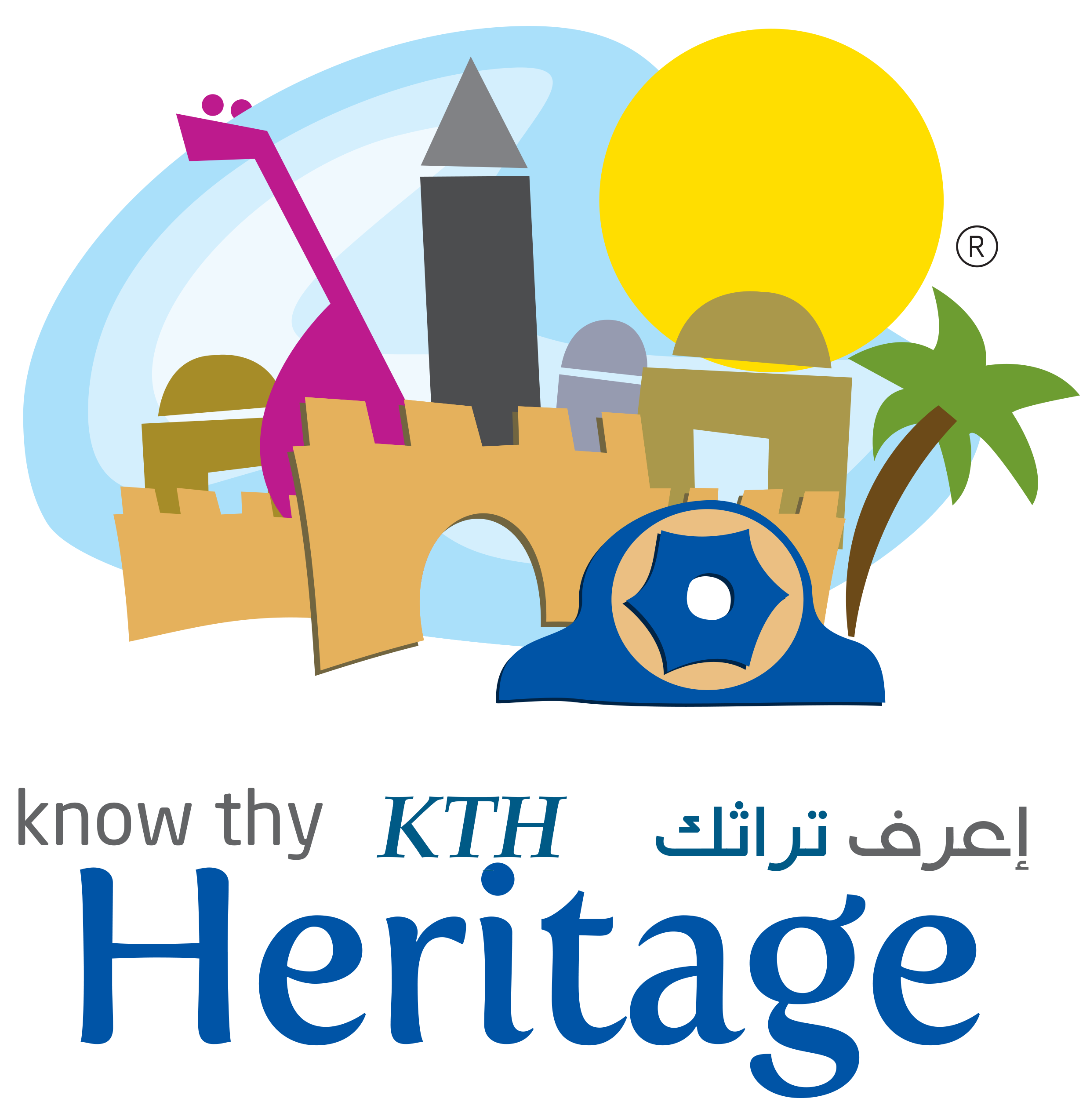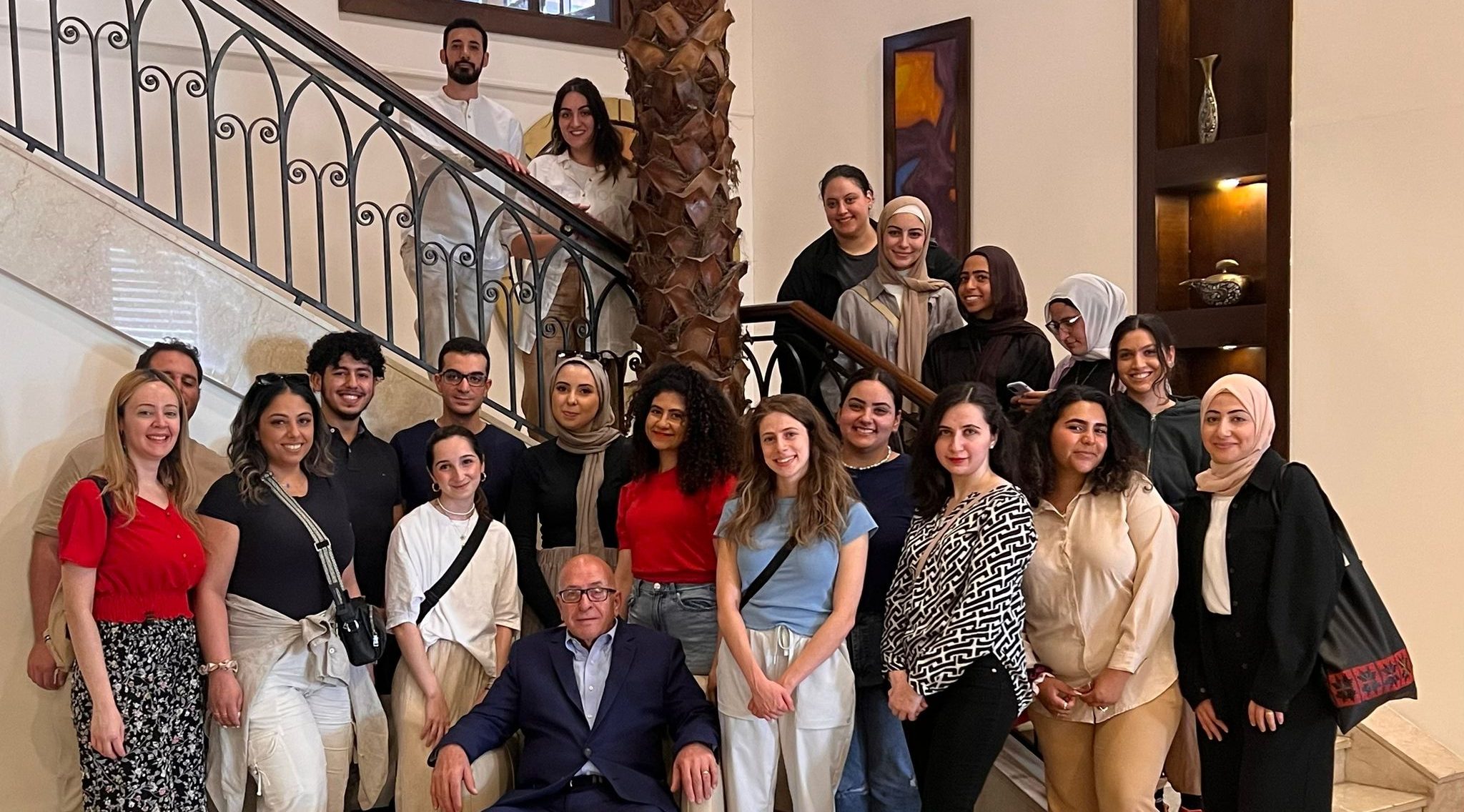Know Thy Heritage Leadership Initiative Day 7: Bethlehem, The Birthplace Of Jesus

By Antonia L. & Nicole M.
 We were excited to start the seventh day of our journey in one of the holiest places for Christianity—the Church of the Nativity in Bethlehem. The Church of the Nativity is a crucial holy place for Christians worldwide and is still used as a place of worship. It was breathtaking to see with our own eyes since it is believed to be the birthplace of Jesus by various Christian denominations. Inside, we got to see the underground portion that leads to the cave or Alter of Nativity, which marks the exact site of Jesus Christ’s birth. Every year, part of the KTH journey involves visiting the holy sites for Islam and Christianity; this holds a special place in the hearts of the alumni when they end their journey.
We were excited to start the seventh day of our journey in one of the holiest places for Christianity—the Church of the Nativity in Bethlehem. The Church of the Nativity is a crucial holy place for Christians worldwide and is still used as a place of worship. It was breathtaking to see with our own eyes since it is believed to be the birthplace of Jesus by various Christian denominations. Inside, we got to see the underground portion that leads to the cave or Alter of Nativity, which marks the exact site of Jesus Christ’s birth. Every year, part of the KTH journey involves visiting the holy sites for Islam and Christianity; this holds a special place in the hearts of the alumni when they end their journey.
In addition to visiting the church in the old city, we also got a chance to explore the area. It was super fun to stroll around the town, chat with the locals, and shop for traditional Palestinian handicrafts, dresses, rosaries and olive wood products, which are highly representative of Palestine. Also, we could not miss eating a delicious falafel sandwich at Manger Square of Bethlehem in one of the most famous falafel spots called Afteem, a must-go!
 We felt very welcomed, happy, and at home in Bethlehem, especially the two of our delegates who are originally from Beit Jala and are now part of the diaspora in Chile and Honduras. Everyone you meet in Palestine is warm and inviting, and you feel you have known them forever.
We felt very welcomed, happy, and at home in Bethlehem, especially the two of our delegates who are originally from Beit Jala and are now part of the diaspora in Chile and Honduras. Everyone you meet in Palestine is warm and inviting, and you feel you have known them forever.
After going to the church and seeing Bethlehem’s city center, we headed to one of the most emotional and significant activities we have had so far, the Aida Refugee Camp and the Lajee Center. There are not enough words to praise the work being accomplished at the community center outside of the Aida Camp, but the ones that immediately come to mind are spreading resistance and hope. The center has different goals; some aimed to help every child’s daily life in the camp, and others to aid the resistance against the occupation.
 First and most importantly, they have multiple rooms, dedicated to the kids in the camp in which they do daily activities, and they have recently opened a kindergarten since the demand for them is really high. Secondly, they advocate for the freedom of the Palestinian population, mainly focusing on the right to return to the original land before the partition in 1948. The reason behind this is that the cities where most of the refugees came from are currently under occupation, so it’s not just a matter of dismantling the camp and relocating the people but a matter of allowing them to return to their home cities safely, without Israeli control.
First and most importantly, they have multiple rooms, dedicated to the kids in the camp in which they do daily activities, and they have recently opened a kindergarten since the demand for them is really high. Secondly, they advocate for the freedom of the Palestinian population, mainly focusing on the right to return to the original land before the partition in 1948. The reason behind this is that the cities where most of the refugees came from are currently under occupation, so it’s not just a matter of dismantling the camp and relocating the people but a matter of allowing them to return to their home cities safely, without Israeli control.
It was really encouraging to see the work done in Lajee Center and the information being spread because we, as future leaders and activists, need to see new ways in which knowledge can be passed to other people.
 |
 |
 |

We also spent part of day seven visiting Bethlehem University. There, we were introduced and received by Vice Chancellor Brot
her Peter, who has been working at the university for 15 years and told the delegates that working there has been both one of the most difficult and most rewarding jobs due to the occupation. We also heard accounts from H.E. Bishop William Shomali, Latin Patriarchal Vicar for Jerusalem and Palestine, and five students from different areas and ages. It was very interesting to see the other points of view and lifestyles of Palestinian students living and studying under the occupation and to hear about their challenges. Despite the obstacles that Palestinians face on a daily basis due to the occupation, it is amazing to see their resilient and hopeful attitude to move on, continue to develop in all areas of their lives and serve others in various career paths.




